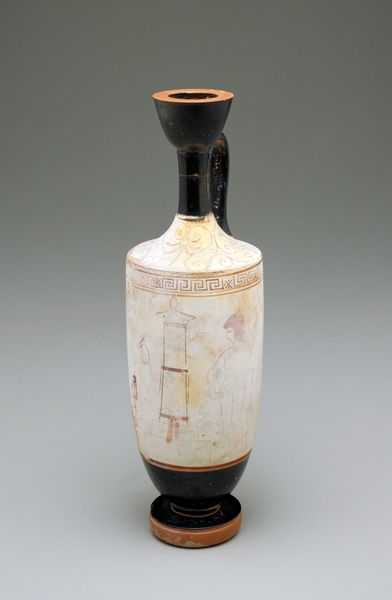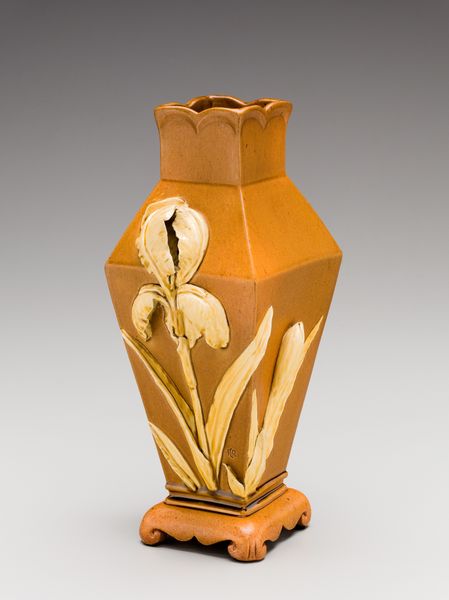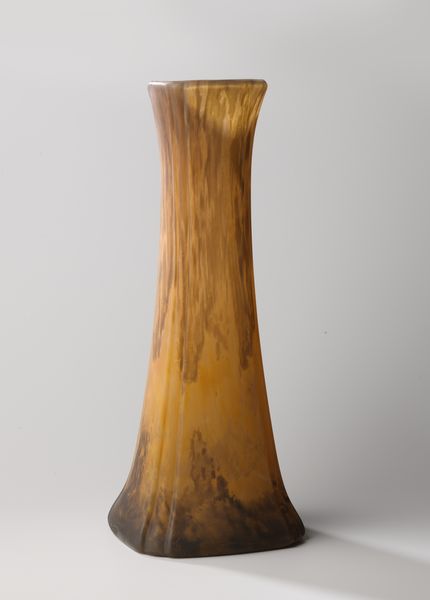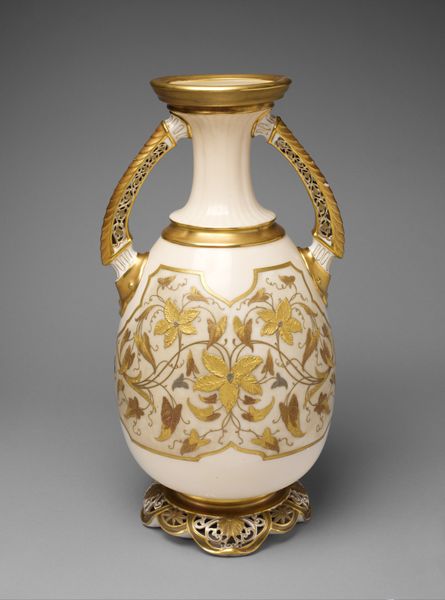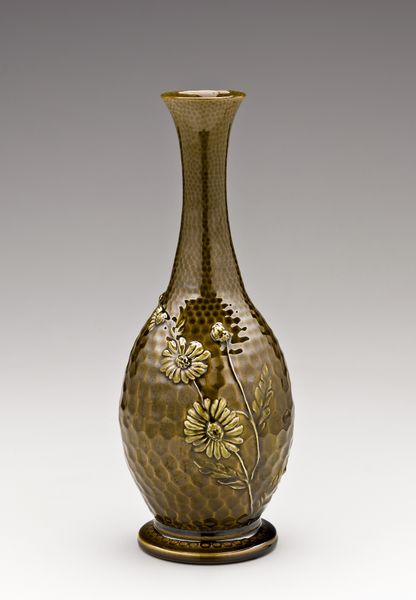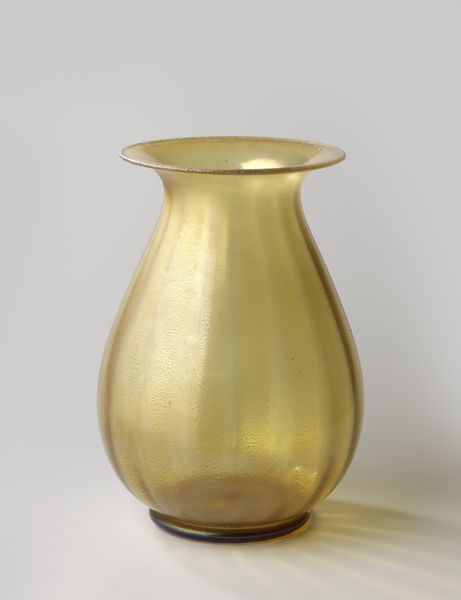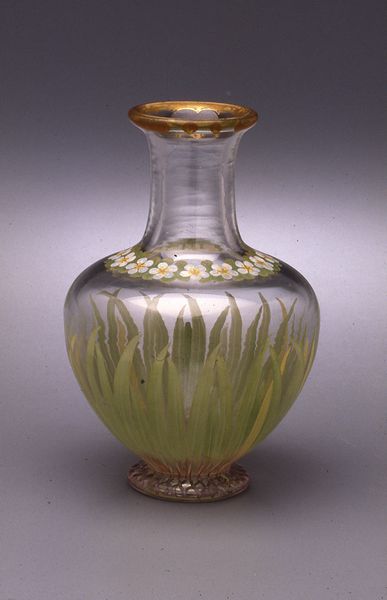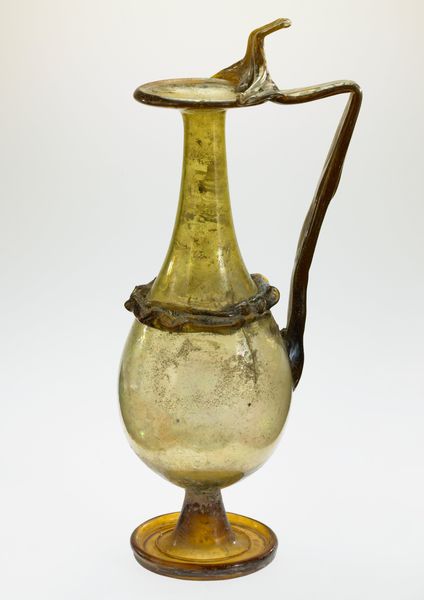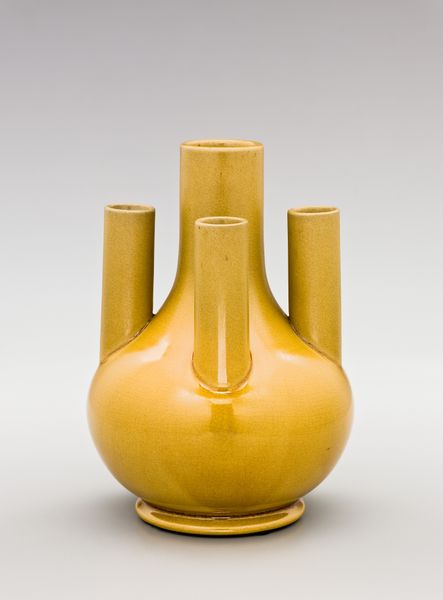
metal, sculpture, ivory
#
metal
#
sculpture
#
islamic-art
#
decorative-art
#
ivory
Dimensions: 10.4 × 5.9 × 2.4 cm (4 1/8 × 2 5/16 × 1/16 in.)
Copyright: Public Domain
Curator: Before us stands a stunning example of decorative art, an ivory flask with metal detailing currently held at the Art Institute of Chicago. It's attributed to the realm of Islamic art, and believed to have been crafted sometime between 1299 and 1923. Editor: Immediately, the contrast grabs me – that creamy ivory juxtaposed with what looks like gilded metal. It speaks of luxury, but there’s also something delicate about the form. What do we know about its fabrication? Curator: Given the wide date range, it is hard to determine definitively the socio-political atmosphere which motivated its crafting. It appears as a decorative work with a heavy consideration for metal and ivory material value and form, with craftsmanship likely dictating much of its perceived value. Editor: Precisely! Consider the labor – acquiring the ivory, the skill in carving it so seamlessly, then the metalwork… what was the workshop environment like? Who were the artisans? It is too beautiful to not also contemplate the effort and cost of such materials, not only as means for creation but the impact on the people and social expectations of that time period and class. Curator: You raise critical points. An object like this undoubtedly reflects the power dynamics of its time, as the elite who were able to acquire the means for such pieces often employed many anonymous or uncredited artisans for production. Objects like this also function as representations of this ability to engage in decorative extravagance within cultural history. Editor: Yes, it also brings the production into focus with the question of raw resource of materials like Ivory. But this isn't just about societal hierarchies; it's also about the hands that shaped it. I imagine it would be interesting to investigate the traditional crafts and how techniques, materiality and skill shaped cultural tradition through time. Curator: Agreed, there's a complex interplay of cultural display and artisanal craft involved in pieces such as this. The social status of decorative ornamentation is a display for wealth. But how labor engages this sort of artwork shows where value is generated. Editor: And what happens when you bridge "high" art with "craft"? It prompts vital inquiries about hierarchies and re-examines labor, especially of unnamed artisans or people groups impacted in obtaining the resources needed for such decadent things as precious ivory, and valuable resources such as precious stones and metals. Curator: Precisely. By investigating beyond aesthetics and ornamentation, we can reframe these objects not as simple items for display, but as social commentaries within cultural contexts. Editor: A vital shift. By focusing on materials and construction and artistic intent, we engage the labor behind art—illuminating more of the societies that gave them form.
Comments
No comments
Be the first to comment and join the conversation on the ultimate creative platform.

